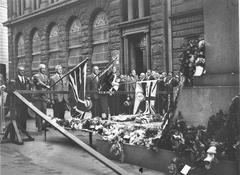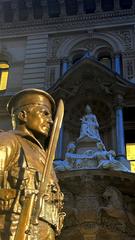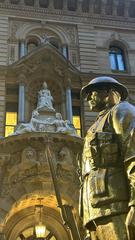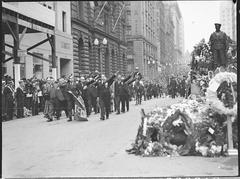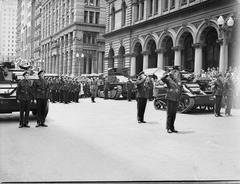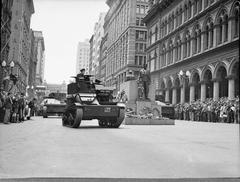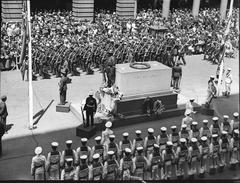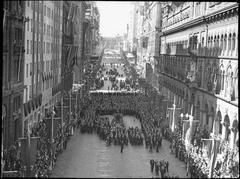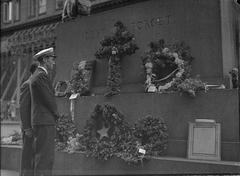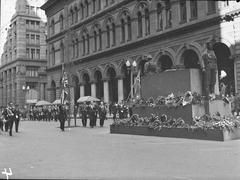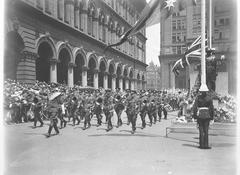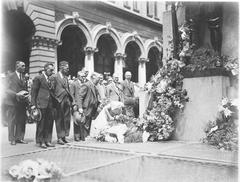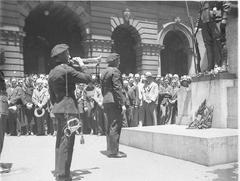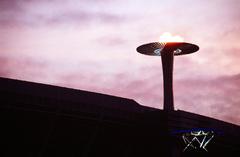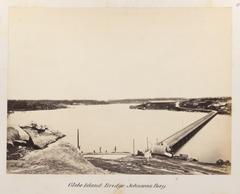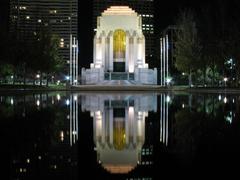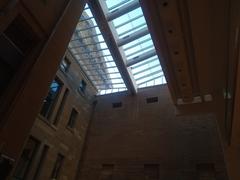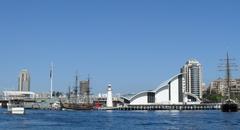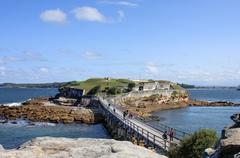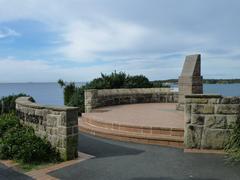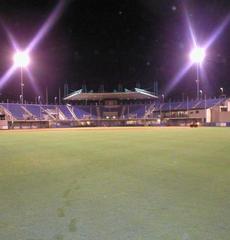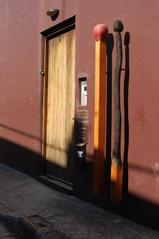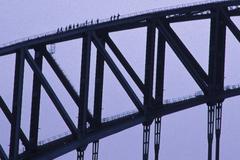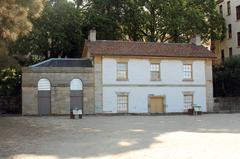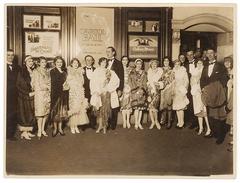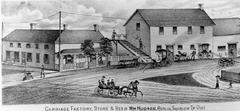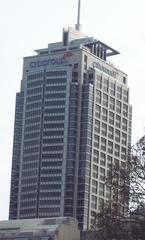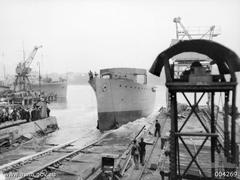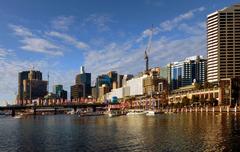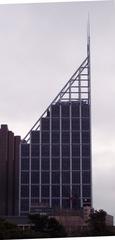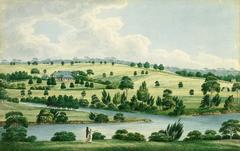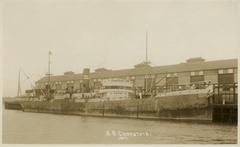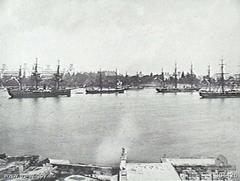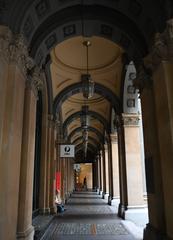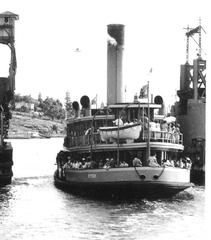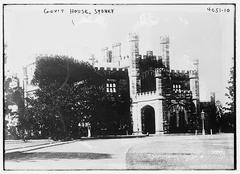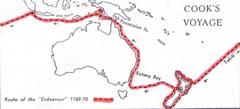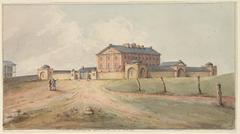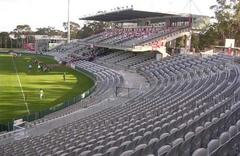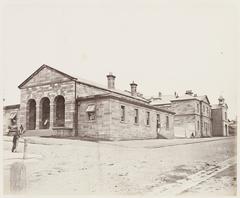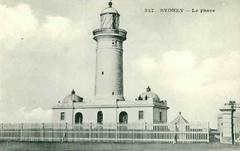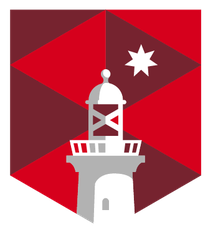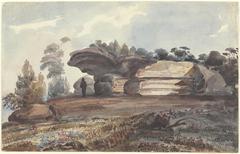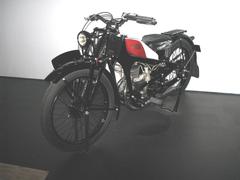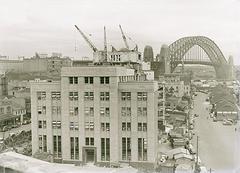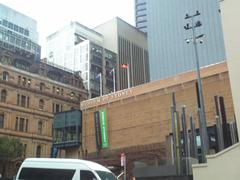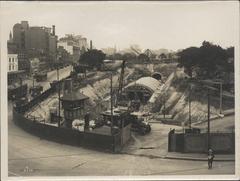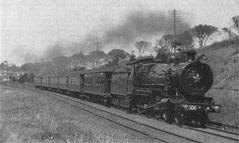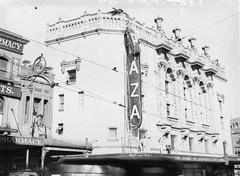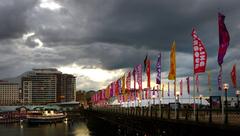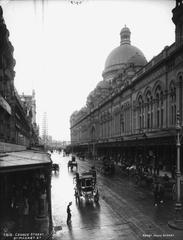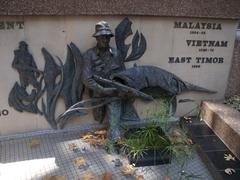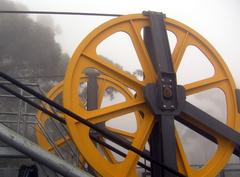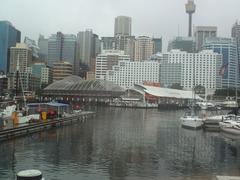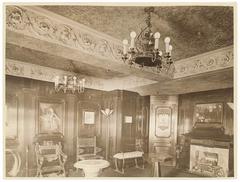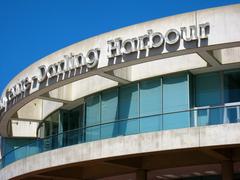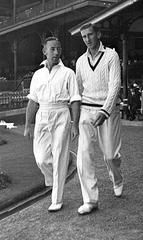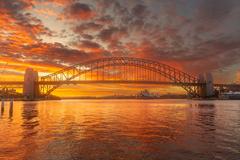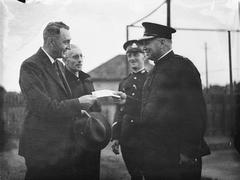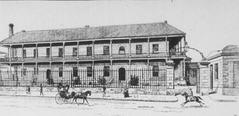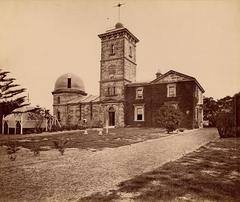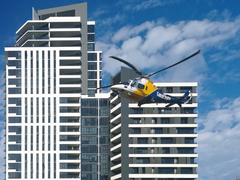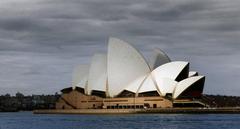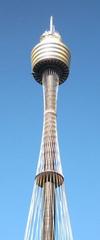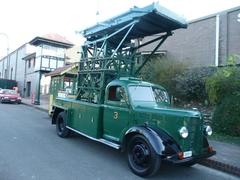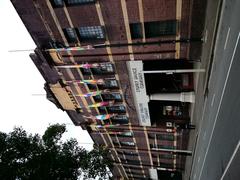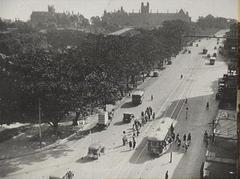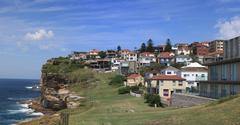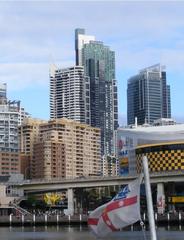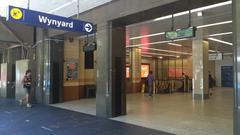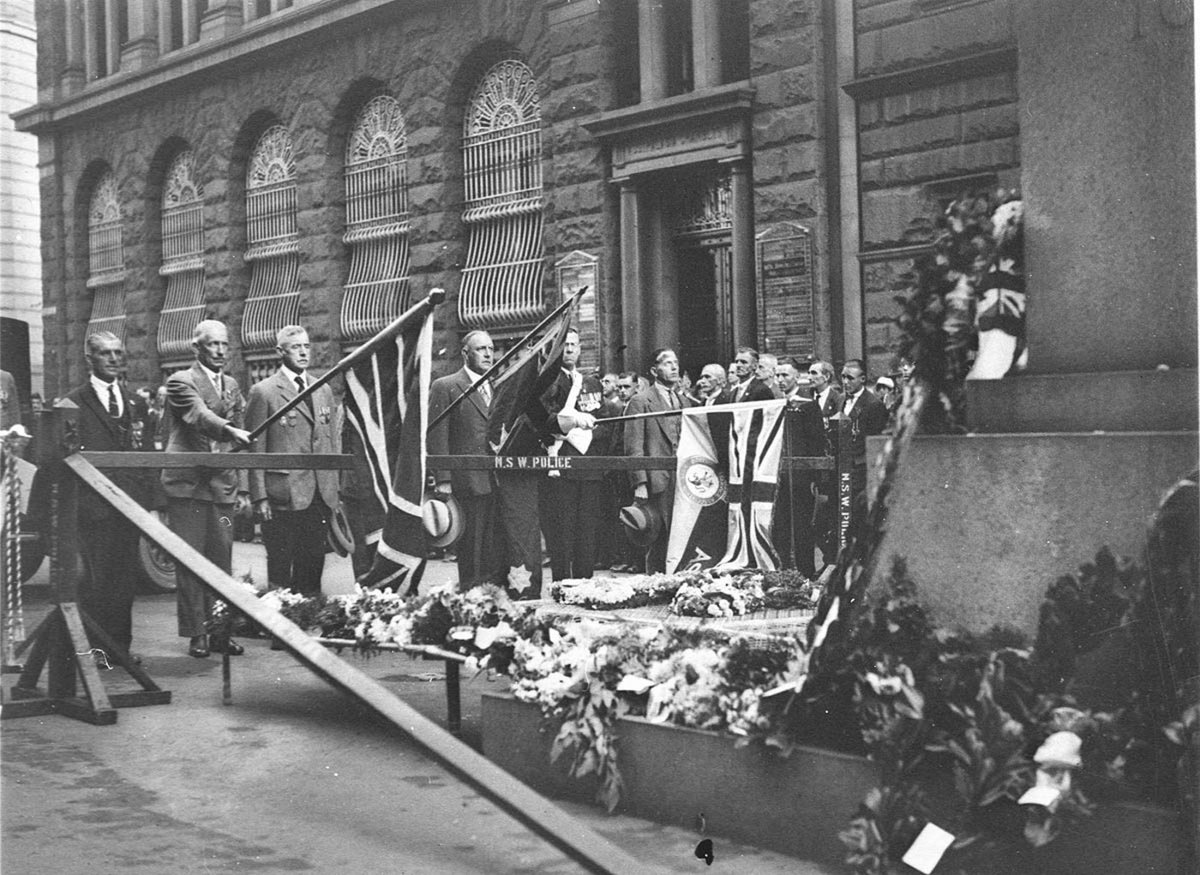
Sydney Cenotaph Visiting Hours, Tickets, and Historical Significance Guide
Date: 14/06/2025
Introduction
The Sydney Cenotaph, prominently located in Martin Place in the heart of Sydney’s central business district, stands as one of Australia’s most significant and evocative war memorials. Erected after World War I, the monument is a solemn tribute to the sacrifices of Australian servicemen and women across numerous conflicts. Its powerful, understated design—a single granite block flanked by imposing bronze statues of a soldier and a sailor—serves as a symbol of collective remembrance and national unity. The Cenotaph’s central location in Martin Place, a site steeped in wartime and civic history, further cements its role as a focal point for public commemoration and reflection.
Visitors can access the Sydney Cenotaph at any time, as it is freely open to the public 24/7, with no tickets or admission fees required. Whether attending the iconic Anzac Day Dawn Service or seeking a quieter moment of reflection, the Cenotaph offers a meaningful and accessible experience. This guide covers the monument’s historical origins, design, commemorative significance, practical visitor information, nearby attractions, and travel tips to help you plan a respectful and memorable visit.
For those interested in a deeper exploration, the Cenotaph is often featured in historical walking tours and is complemented by nearby landmarks such as the General Post Office and the Anzac Memorial in Hyde Park. As a New South Wales State Heritage site, its ongoing preservation ensures that future generations can continue to honor Australia’s military legacy (Naval Historical Society of Australia; RSL NSW; City of Sydney; Wikipedia).
Contents
- Introduction
- Historical Background
- Origins and Purpose
- Design and Construction
- Unveiling and Early Reception
- Role in Commemoration and National Significance
- Heritage Status and Ongoing Preservation
- Visiting the Sydney Cenotaph
- Visiting Hours and Admission
- Accessibility
- Getting There and Travel Tips
- Nearby Attractions
- Special Events and Guided Tours
- Photographic Opportunities
- Frequently Asked Questions (FAQ)
- Conclusion
Historical Background
Origins and Purpose
The term “cenotaph” comes from the Greek for “empty tomb,” signifying a monument erected in honor of those whose remains are elsewhere (Naval Historical Society of Australia). The impetus for the Sydney Cenotaph arose after World War I, as New South Wales and the broader nation sought to commemorate the immense loss and sacrifice. The Returned Sailors and Soldiers Imperial League of New South Wales (now RSL NSW) proposed the memorial in 1923. Martin Place, already a hub for wartime rallies and gatherings, was selected for its historical resonance (Warmemorialsregister NSW). The state government allocated £10,000 for the project in 1926, underlining its importance (Naval Historical Society of Australia).
Design and Construction
Renowned sculptor Sir Bertram Mackennal designed the Cenotaph as an “altar of remembrance.” The monument is a rectangular block of Moruya granite—sourced from the same quarry as the Sydney Harbour Bridge pylons—measuring about 3.05 meters long, 1.6 meters wide, and 1.22 meters high (Sydney Point). At each end stand larger-than-life bronze statues: a soldier and a sailor, modeled on actual servicemen—Corporal William Pigott Darby and Leading Signalman John William Varcoe (Sydney Point; Naval Historical Society of Australia). The inscriptions “To Our Glorious Dead” and “Lest We Forget” encapsulate the memorial’s spirit (City of Sydney).
Unveiling and Early Reception
The Cenotaph was officially dedicated on 8 August 1927, with the completed statues unveiled on 21 February 1929 by Premier Sir Thomas Rainsford Bavin, in the presence of General Sir John Monash and a large public gathering (Naval Historical Society of Australia). While some critics initially questioned the statues’ standing posture, Mackennal defended his vision as guardianship rather than overt mourning. Over time, the design has been lauded for its dignified simplicity.
Role in Commemoration and National Significance
Since its opening, the Cenotaph has been central to Sydney’s commemorative life, notably hosting the first Anzac Day Dawn Service in 1928—a tradition now observed nationwide and internationally (Wikipedia). The memorial does not list individual names; instead, it symbolically represents all Australians lost in war, fostering an inclusive vision of national remembrance. It is the site for major ceremonies including Anzac Day, Remembrance Day, Victory in the Pacific Day, and others (City of Sydney; What’s On City of Sydney).
Heritage Status and Ongoing Preservation
The Sydney Cenotaph was added to the New South Wales State Heritage Register on 11 November 2009 (Wikipedia), ensuring its ongoing preservation by the City of Sydney and RSL NSW (City of Sydney; RSL NSW). Regular conservation work protects both the granite and bronze, maintaining the site as a dignified space for personal and public remembrance.
Visiting the Sydney Cenotaph
Visiting Hours and Admission
The Sydney Cenotaph is available to visitors at all times, as it is located in an open, public space in Martin Place. There are no set visiting hours and no ticket or admission fee required. This makes the Cenotaph an accessible site for spontaneous visits, quiet reflection, or participation in major commemorative events.
Accessibility
Martin Place and the Cenotaph are wheelchair accessible, featuring smooth, level paving and ramps. The area is also equipped with tactile ground surface indicators for visitors with vision impairments. Public transport—including Martin Place train station, numerous bus routes, and nearby light rail stops—provides convenient access. During major events, additional provisions such as Auslan interpreters and accessible viewing areas are often available.
Getting There and Travel Tips
- Train: Martin Place Station is a short walk from the Cenotaph.
- Bus: Several routes stop nearby on Elizabeth, Castlereagh, and George Streets.
- Light Rail: George Street light rail offers easy access.
- Car: Paid parking is available in nearby commercial car parks; however, parking can be limited during major events.
For a quieter experience, consider visiting in the early morning or late evening, outside of major commemorative days.
Nearby Attractions
- General Post Office (GPO): Adjacent to the Cenotaph, with significant wartime history.
- Hyde Park & Anzac Memorial: A 10-minute walk for further military history and interpretive displays.
- State Library of New South Wales: For exhibitions and archives.
- Pitt Street Mall & Strand Arcade: Shopping and dining in the CBD.
- Circular Quay: A short walk for views of Sydney Opera House and Harbour Bridge.
Special Events and Guided Tours
The Cenotaph is the focal point for Sydney’s Anzac Day Dawn Service (April 25, from 4:30 am), Remembrance Day (November 11, 11:00 am), and other commemorative ceremonies. These events may involve temporary road closures and large crowds; plan to arrive early.
While there are no guided tours specifically for the Cenotaph, many Sydney walking tours include Martin Place and its memorials. For a more immersive experience, consider combining your visit with a guided tour of Hyde Park’s Anzac Memorial.
Photographic Opportunities
The Cenotaph’s austere design and the contrast of granite and bronze provide striking photographic opportunities—especially at dawn or dusk. The surrounding heritage buildings and urban vibrancy of Martin Place add context and atmosphere.
Frequently Asked Questions (FAQ)
Q: What are the Sydney Cenotaph’s visiting hours?
A: The Cenotaph is accessible 24/7 as it is located in a public square.
Q: Is admission free and are tickets required?
A: Yes, entry is free and there are no tickets required.
Q: Are guided tours available?
A: While there are no dedicated guided tours of the Cenotaph, many Sydney walking tours include it as a key stop.
Q: Is the site wheelchair accessible?
A: Yes, Martin Place and the Cenotaph are fully accessible.
Q: When are the main commemorative events held?
A: The major ceremonies are Anzac Day (April 25, Dawn Service) and Remembrance Day (November 11, 11:00 am), with additional events throughout the year.
Q: What is the etiquette for visitors?
A: Maintain a respectful demeanor, observe moments of silence during ceremonies, and avoid climbing on the monument or statues.
Conclusion
The Sydney Cenotaph is a profound symbol of Australia’s military service and sacrifice, inviting both quiet reflection and participation in nationally significant ceremonies. Its elegant simplicity, historical importance, and central location make it a must-visit destination in Sydney. With no barriers to entry and comprehensive accessibility, the Cenotaph welcomes all who wish to honor and remember.
Whether you are a history enthusiast, a traveler seeking meaningful cultural experiences, or a local participating in public commemorations, the Sydney Cenotaph offers a compelling portal into the nation’s heritage. Combine your visit with nearby attractions, observe respectful conduct, and consider using resources like the Audiala app for curated historical content and guided explorations.
Image suggestion:
Internal link suggestions:
Sources and Official Links
- Sydney Cenotaph and Its Guardians, Naval Historical Society of Australia
- The Cenotaph, RSL NSW
- Sydney Cenotaph, City of Sydney
- Sydney Cenotaph, Wikipedia
- Warmemorialsregister NSW, Cenotaph Martin Place Sydney
- Sydney Cenotaph 2025 Evzones Visit, Neos Kosmos
- Sydney Cenotaph Events, What’s On City of Sydney
- Sydney.com ANZAC Day Dawn Service
- Sydneypoint.com.au ANZAC Day
- Greek City Times – Evzones Visit
- Veterans NSW Commemorative Dates
- Greek Herald – Evzones and Cultural Celebrations
- Trek Zone – Sydney Cenotaph
